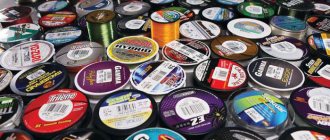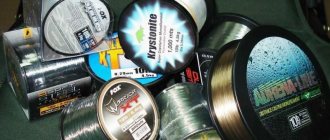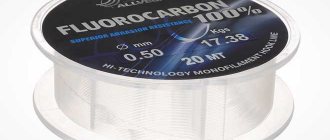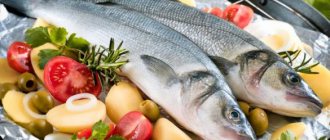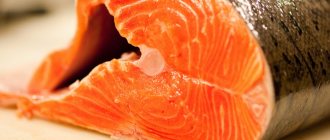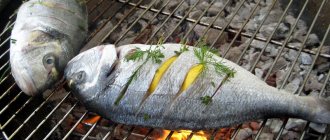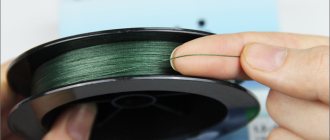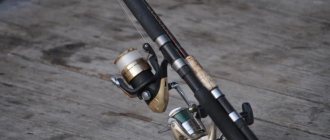When assembling spinning tackle, the angler is faced with an important problem related to solving the problem, the purpose of which is spinning cords, or rather, their competent selection. Innovative materials have played a big role in modern fishing, allowing manufacturers to produce ultra-light but reliable gear, as well as threads that can withstand fairly high breaking loads with small diameters. Although there are only two effective options for equipping a spinning rod with the presented equipment element, the various characteristics of the cord allow this to be done in the widest range, and therefore cover many conditions for spinning fishing.
But in order to select a thread for a certain type of fishing and, of course, the trophy expected in the catch, the angler must know and understand the capabilities of the material. The cord for spinning fishing is presented in the form of monofilament and braided fishing line. If the role and purpose of the accessory options in the gear are quite identical, then the properties of these materials differ radically from each other, which causes major difficulties in determining the choice when purchasing.
In the article presented below, we will talk about the differences in materials and prerequisites for equipping a spinning rod with one or another type of cord, supporting the information by providing the reader with a rating of the most common and reliable fishing lines.
Advantages of braided lines for spinning rods
As a result of the practice of spinning fishing, braided fishing line for spinning has gained much wider popularity and use in tackle rigs than monofilament nylon threads, which have unconditionally become a classic of float fishing. And there are explanations for this factor, expressed in a number of advantages of the material.
Important! One of the main advantages of the braided line is its high information content.
This property results from the increased rigidity of the material. Polyethylene threads have minimal elongation and any touch of the bait by the fish is instantly transmitted to the quiver tip of the tackle. The second most important advantage of wattle is its high breaking load with a relatively small diameter of the thread structure.
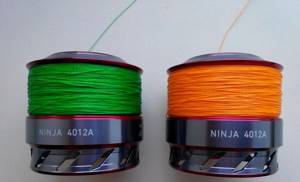
Spinning rigs assembled on the basis of this material are more delicate than rigs formed from nylon versions of fishing line, which are similar in strength to wattle. The advantages of braids are their low sensitivity to ultraviolet radiation, which has a detrimental effect on nylon. In addition to this quality, special coatings for the surface of the thread contribute to the long service life of the cord, regardless of the composition of the water. Polyethylene fiber has no memory, returning to its original shape even after unraveling beards, not to mention winding on a spool.
To be fair, it is worth pointing out the disadvantages, the dominant of which is the high price parameter compared to monofilament, as well as the not entirely satisfactory resistance of the material to fishing on soils with abrasive rocky and shell inclusions.
Braided Cord Structure
In braided cords, the fibers form thin threads, which in turn are woven into thicker threads. A cord with a more complex weave will be stronger and more reliable. There are also cords in which thin fibers are only tightly twisted, but not intertwined. They lose greatly in terms of strength and durability of use.
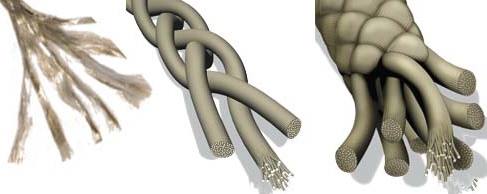
Braided cords are based on high-quality polyethylene fibers, which are manufactured in only three factories in the world: Dutch StateMines, American AlliedSigna and Japanese Toyobo, and Dutch and Japanese products are produced under the same Dyneema brand.
It is from these factories that all manufacturing companies buy raw materials, which then manufacture cords using their own individual technologies. Due to different technologies, the characteristics and quality indicators of braided cords differ from different brands.
Which is better - fishing line or cord?
The dilemma of which spinning line is best is resolved by analyzing the planned fishing conditions. First of all, this is the bait supply distance. As a rule, monofilament lines, which have a high coefficient of stretching of the fishing line material, cannot efficiently transmit a bite from long distances, which reduces the final number of successful fish hooks. Therefore, there is a rule for spinning fishing, which provides for short-distance fishing with the possibility of using monofilament fishing line for spinning. The material perfectly transmits bites from a distance of up to 25 meters. At longer distances the fence is definitely used.
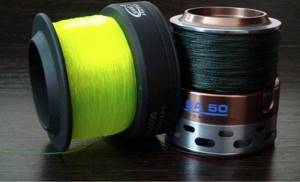
In addition to the hunting distance, the style of wiring can also affect the placement of a braided line. After all, such areas as twitching or jig, which require precise control and a feeling of guiding the equipment, are more effective to do even at small limits on a rigid cord. Problems with the use of wattle emerge only at the stage of fishing for a large trophy, which, due to the lack of the thread's ability to stretch, can crush the tackle. But fishermen, together with manufacturers, found a way out of this situation in reels with functions for fine-tuning the friction brake, which determines the success of the result of the fight without consequences critical for the gear.
In view of these facts, the choice of monofilament or braid has very real limits to the justified use of one or another material, but in modern spinning fishing there is a clear advantage on the side of braid. In addition, the thinness of the equipment assembled from small diameters of polyethylene thread contributes to improving fishing results and its inclusion in a spinning set can already be safely classified as a classic and most practical equipment assembly.
Which braid to choose for jig
When choosing braid specifically for jig fishing, you need to take into account the characteristics of the type of fishing itself.
Braided fishing line should have a minimum elongation coefficient, which will allow the fisherman to better feel the topography of the bottom of the reservoir and catch every bite.
The braid for a jig must also be very slippery in order to make long casts without problems.
When fishing in difficult conditions (for example, in snags and shell rocks, where the chance of breaking is extremely high), the braid should be enclosed in a shell.
How to choose braid for spinning
Unfortunately for the spinner, the angler will not be able to choose a thread that is suitable and universal for all fishing situations. The unorganized production of this product, and as a result, the lack of a unified classification of cords, makes the choice a difficult process not only for beginners, but also for experienced fishermen. When choosing, you need to start from the upcoming and most likely fishing conditions, projecting onto these data the properties and characteristics of the product offered for purchase. Braided cords for fishing have striking differences only in the structure of production, and this is not to mention such well-known parameters as diameter, color spectrum of the thread and length of winding in the bobbin.
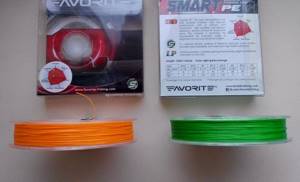
In continuation of the article, we will pay attention to the fundamental points that you should pay attention to when choosing an effective accessory to complete your spinning rod. After all, from the very beginning, the fisherman must understand that the expensive purchase of braid for a spinning rod is carried out not for one or two fishing trips, but for at least two or three intense fishing seasons.
Classic weaving
Classic weaving is the structure of a final cord assembled from several polyethylene fibers of identical diameters and material properties. This kind of braided fishing line for spinning can consist of 3–16 separate threads. After weaving, a rigid and durable low-stretch twist is obtained. This type of product when cut has a not very clear rounded appearance, which during the fishing process leads to rapid abrasion of the protruding surfaces, ultimately leading to fraying of the thread and its further delamination, which is fraught with a sharp decrease in strength.
A product in classic weaving has a shorter service life and, accordingly, a lower cost. You can distinguish the weaving structure by visually inspecting the thread, noticing the periodicity of the multidirectional surface pattern. The so-called budget braid will be a good element for a novice fisherman’s spinning tackle kit and, despite its shortcomings, will be able to successfully serve for more than one season.
Multi-filament cord
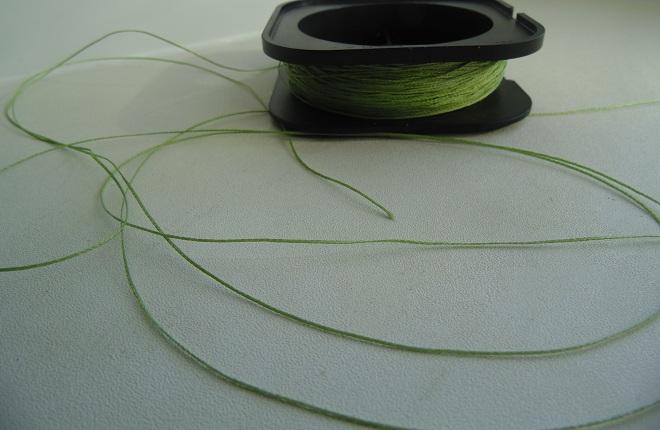
Multifilament cord is produced according to a different principle, although it is all made from the same polyethylene fibers of small diameters. In these types of products, the threads are not intertwined, but glued or pressed into one even structure. The strength of the connection into a single whole of individual fibers is achieved with a special adhesive solution, which, in addition to the direct function of connection, acts as a protective and friction-reducing layer.
Each manufacturer that has a spinning rod braid in its list of products uses its own chemical composition of glue to glue the fiber, the formula of which is kept in strict secrecy. It is this composition that influences the differences in the quality of similar products from world leaders in the production of wattle, allowing the fisherman to make the choice necessary for his goals and wallet. The result is a fairly smooth surface of the structure, with an almost perfect round cut. The quality of the cord produced using this method is higher, as is its price.
Multifilament threads are softer and have a longer service life compared to a classically produced product. Using this wattle in equipment, an increased range of baits is achieved. With prolonged use, the thread loses its shape, seriously flattening in cross-section. A completely flat structure indicates the beginning of a loss of initial reliability, and therefore the necessary replacement of the equipment element with a new product.
Diameter
The thickness of the braided line for spinning rods is relative and by no means uniform. The overwhelming majority of manufacturers mark their products by indicating the diameter on the packaging, which only approximately corresponds to the actual condition of the fence. In general, the diameter limit varies between 0.06 and 0.8 mm. Compliance with the markings can be checked with a micrometer by measuring the knot tightly tied to the structure of the material, but it is most accurate to focus on the indication of the maximum breaking load of the material. This indicator will more realistically characterize the capabilities of the thread and will help you choose the appropriate option for fishing conditions, based on the expected dimensions of the trophy in the catch. The diameter of the braid can indicate the quality of the product.
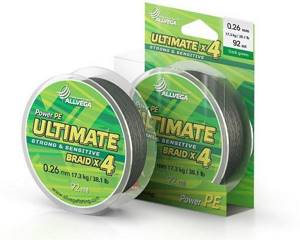
Important! If differences in thickness are visually noticeable on a piece of thread, this is a sure sign of a low-quality product, the purchase of which should be postponed.
The spinner should know that even with a short service life of the new accessory, its diameter changes from a round cut to a flatter shape.
Color
The color of the braid, according to radically different opinions of anglers, performs several important functions in the composition of spinning equipment. Some spinners are confident that the number of bites is increased by products similar to the color of the water. Another group argues that the color spectrum directly affects the comfort of fishing, or rather, adding visual clarity in observing the progress of the bait. But one way or another, these statements and views are facilitated by the widest possibilities for selecting threads across the color spectrum.
This is where there really is a choice, ranging from pure white and black fibers to catchy and exotic acidic and ultra bright colors. In addition, in sales you can often find a zonally colored cord, which allows you to comfortably count the casting distance. Contrary to the existing belief that brightly colored threads have less strength, you should not trust them. Modern materials make it possible to maintain its original reliability even after chemical treatment of the fiber by dyeing. To be fair, we note that over time, even expensive and high-quality wicker loses the brightness of the paint, which, fading and being washed out with water, fades, making the thread gray and dirty white.
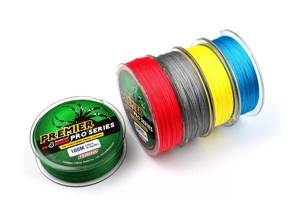
Number of plexuses
The number of weaves, or more precisely the number of intersections of each individual strand per centimeter of its length, affects the strength of the product. For example, 5–6 weaves per unit length indicate that the thread will withstand loads from catching a trophy up to 5 kg. Stronger cords, twisted from eight plexuses. Such accessories can withstand loads of up to 10 kg, and this guarantees the catch and victory of the spinning rod over a serious pike. Multilayer weaves of 12 fibers and above are considered especially strong forests, with which they can safely go to catch twenty-kilogram catfish, without fear of breaking the equipment.
Number of threads
By the number of collected threads, you can judge not only the high breaking load of the braid, but also choose the right accessory for the size of the spinning rod used for fishing. For light rod models and in particular ultralight, braid models with 3–4 fibers are suitable. This product is lightweight and has low windage, facilitating long-distance casting of miniature baits. It is more effective to equip medium and powerful spinning rods with eight-core accessory models. Projecting these material characteristics onto baits, we conclude that eight-strand threads are suitable for fishing with baits weighing 10–50 grams, and three-strand threads are suitable for comfortable fishing with simulators up to 10 grams inclusive.
Section shape
High strength with a small diameter can be ensured by an ideal round cross-section and a smooth surface of the material structure, which evenly abrades when passing through the passage rings. In wattle fence, as we already know, due to the peculiarities of its production, ideal round sections cannot be achieved. Gradually losing its rounded shape, the thread wears unevenly and begins to lose strength in deformed sections of its length. In addition, flat shapes increase windage, reducing casting distance and deteriorating the quality of retrieves, which is especially noticeable when fishing in the wind.
The angularity of the deformed structure disrupts the order of winding the thread in the spool, causing tangling, beards and spontaneous dropping of loops from the spool during casting. Therefore, when purchasing, it is important to choose a braided line with as round a cross-section as possible, ignoring accessories with an initially flattened cut when purchasing.
How to deal with the disadvantages of braided fishing line
There is only one way to combat the price, and that is not to buy long-sized braided cord. For most reservoirs, the working length of the thread will be 30-70 meters, so it is most profitable to buy it 100 meters long and, when winding it on the reel spool, compensate with cheap monofilament fishing line, winding it under the braided thread.
The property of the lack of stretchability of the braid can be used at long and close distances, as it makes it possible to instantly feel the bite of a predator and understand its behavior, but if the reel is incorrectly configured, a sharp bite from a large predator can lead to breakage of the rod, since there will be no compensation for the blow when biting . Therefore, you need to learn how to set up and use the reel brake.
Additionally, the lack of stretchability gives a feeling of the weight of the bait on the spinning rod, which increases the reaction in the movement of the bait when retrieving it and manipulating the tip of the rod and spoils the game of the bait, take this property into account, perhaps this is the reason for failures when fishing with a spinning rod.
We recommend: Minimum sizes of fish allowed for catching in the West Siberian fishery basin, save to bookmarks
Almost all braids float on the surface of the water, and this probably scares the fish, since they can see it, but this is a fact that has not been proven by anyone. In this situation, the use of fluorocarbon leashes 1 to 2 meters long helps.
In shallow water, leashes up to a meter long are used, at depths or when using heavy baits up to 2 meters.
The diameter of the fishing line for the leash should be selected based on the breaking load of the fishing line; it should be greater than the breaking load of the cord, but not more than twice.
How to choose a fishing line for spinning
Monofilament or nylon fishing line for spinning remains a relevant cord option when completing spinning gear for hunting at short distances, and even when using spinners, it copes much better than braid with resisting twisting of the material. When looking for monofilament samples to purchase, pay attention to the product labeling, where you can often see recommendations for the use of fishing line specifically for spinning fishing. Such accessories have lower stretch coefficients and greater rigidity, which reduces the memory effect, improving the range of the tackle and increasing the information content of the equipment.
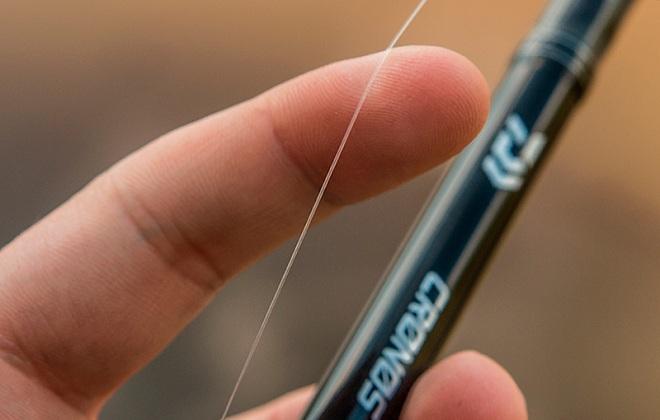
For spinning fishing, it is advisable to purchase a monofilament with negative buoyancy, which can go deeper on its own and thereby quickly bring the bait to the desired fishing horizon. Otherwise, the choice of fishing line for a spinning rod is determined by the selection of the breaking load of the material required for the size of the fish, which, unlike wattle, is quite simply determined by the marking of the diameter of the nylon thread and the color shade of the monofilament. The thickness of the fishing line and its color will be the subject of further consideration of the element of spinning equipment with the argumentation of the choice required for the fishing conditions.
Thickness
The thickness of the fishing line suitable for comfortable retrieves and reliable fishing rarely exceeds 0.3 mm in diameter. This thickness, and accordingly the magnitude of the breaking load, can withstand the resistance of the trophy up to 10 kg. Nylon with a larger diameter significantly reduces the quality of wiring due to noticeable stretching of the structure and high windage of the accessory against resistance to flow in water.
Important! It is impossible to cast a miniature bait long distance on a thick fishing line.
For light spinning rods, the optimal thickness is 0.17-0.25 mm, and for ultralight fishing, the diameters of monofilament for spinning rods are selected in the range from 0.12 to 0.15 mm. Even on such thin forests it is quite possible to get a trophy weighing 1-1.5 kg.
Line color
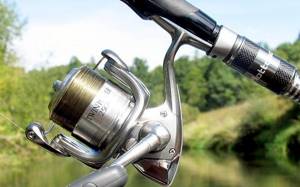
The universal and most common color of nylon cords is the transparent structure. This type of material is suitable for most fishing conditions in clean and clear water. Bright red, acid yellow or light green fishing line for spinning fishing is more relevant in muddy waters. When fishing peat bogs, it is advisable to use brown, black and gray tones of nylon, and when fishing areas with thickets, blue and green fishing lines are less noticeable in the water. Unlike wattle, high-quality nylon fishing lines do not fade over time and retain their original color throughout their entire service life.
“Yes, she can withstand a whale!” or about the strength of the braid
So, getting excited, its fans defend the braided line. From the very beginning, it was advertised as a line that was several times stronger than regular monofilament. And you can’t argue with this: of course, the cord is stronger than a thread of the same diameter.
But there is a catch here. It is impossible to accurately measure the diameter of the braid. Because in cross section it is not strictly round, but is often elongated in the form of an oval, or even angular.
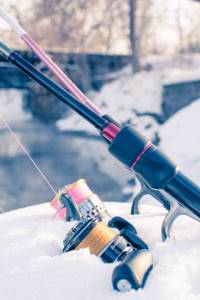
This allows manufacturers to fool gullible fishermen by the nose. If the cord packaging indicates a diameter of 0.16 mm, then it is quite possible that, in fact, its thickness is close to 0.2 mm. If we compare its strength with a fishing line with a diameter of 0.16 mm, then, of course, it will turn out to be much weaker. But the comparison is incorrect!
To this we must add that often the breaking load indicated on the packaging is clearly overestimated.
We cannot fight these “little tricks,” but we must take them into account when purchasing and using braided wire.
Choose one that is closer to a circle in cross section. The flat one winds unevenly on the spool and often gets tangled. Casting it far and definitely more difficult; it floats when casting even in running water. Moreover, due to its “angularity”, it frays on the coil and fails faster.
The cords are impregnated with special preparations to protect them from ultraviolet radiation and frost. Impregnation makes the knot stronger and improves glide. Assess the quality of the impregnation by tying the fishing line in a knot and inspecting it to see if impregnation particles are peeling off or if the packaging is strewn with them. By the way, the knot with which the fishing line is tied greatly affects the strength. Be sure to take a closer look at the knot drawn on the package; it is optimal for this type of braid.
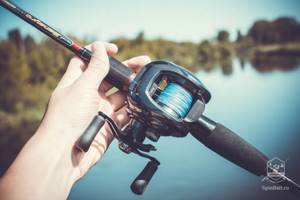
Rating of braided lines for spinning rods
We have collected the best braided cords for spinning rods into an impromptu rating of five positions, allowing the fisherman to take a closer look at purchasing decent equipment options without fear of buying a low-quality product, especially since the price level of this kind of cords is sometimes comparable to the cost of the rod or reel itself.
The leading position in the form of the first number in the top 5 is held by the Japanese manufacturer Sunline . An enviable product line in the form of markings SM, PE, EGI, ULT, HS8, HG allows the spinner to quickly navigate the purchase of a cord for a certain category of spinning rod. Highly informative material ideally provides conditions for tight control of the bait, and a special coating allows you to achieve maximum casting distance. The price level is high, but appropriate for the product.
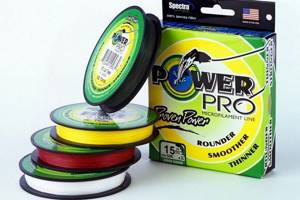
Not much inferior to the leader is the second position, assigned to the American manufacturer of fishing accessories Berkley, which produces braids under the Fireline . Among the company's products in this area, we note the Fireline Tracer Braid series of cords, which have high breaking loads at small thicknesses due to the use of Microdynema fiber for the production of threads. A product of high value and the same quality.
On the third line is the Sufix and its innovative development in the form of the 832 Braid model. The eight-core accessory is resistant to maintaining a rounded cross-sectional shape, which increases not only the range of the tackle, but also allows you not to lose abilities leading to a decrease in the initial parameters of breaking loads.
Fourth in the ranking is the Japanese model Duel PE Hardcore X4 . This is a universal thread, highly resistant to abrasion, and can cover both spinning and feeder fishing conditions. One of the best braids for light and medium-class spinning rods at a mid-budget product price level.
Rounding out the top five is perhaps the most widespread and well-known American brand in our country, Power Pro, and the Moss Green model . The popularity of the thread is given by the relatively low price level with the high quality of the material, as well as various parameters and properties of the product. Convenient for shopping unwinding volumes of 135 and 275 meters, a wide color spectrum and an abundance of diameters increase the attractiveness of purchasing this option.
Which fishing line to choose for spinning
By analogy with wattle, we will highlight in the top 5 models of monofilament line, suitable for effective spinning fishing and recommended as an option for purchase.
Daiwa Samurai-Pike 3 as one of the best monofilament lines for spinning rods worthy of first place in the rating . The brand offers nylon in various color shades in diameters from 0.25 to 0.35 mm. The line has a low stretch coefficient, but at the same time a fairly soft structure.
The second number is for Shimano with a line specially designed for Technium Spinning . This nylon differs from other branded models in its low memory and optimal rigidity for guiding artificial baits.
Three for Reflo Power Max, which has a line of spinning lines with diameters ranging from 0.12 mm to a thickness of 0.35 mm, which provides both ultralight fishing and fishing with medium spinning rods. Mid-budget product.
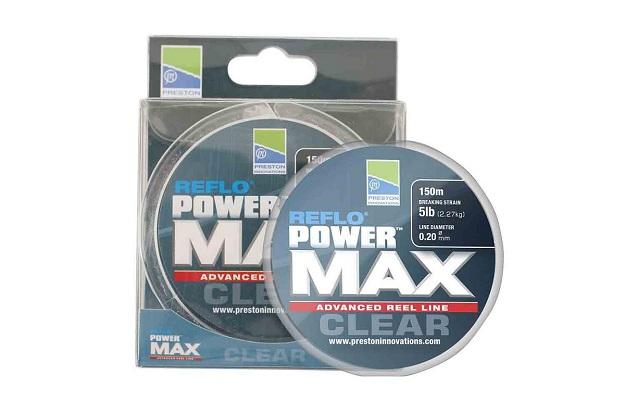
On the fourth line is Trabucco Spinning Super Strong . Also a fiber specialized for spinning fishing with high information content for nylon. Premium product.
Fifth position behind the Salmo Specialist Feeder . A budget option, positioned by the manufacturer as a feeder line, but quite effective due to the low stretch coefficients in spinning fishing. Such a monofilament can be safely used on a spinning rod for fishing short distances using jigging and twitching.
The most popular and reputable manufacturers
Among the huge assortment of wattle fences, not every product is distinguished by its quality. Only a small number of manufacturing companies have received recognition among fishing experts.
But in addition to a trusted brand, we recommend that you familiarize yourself with the technical characteristics of each product in order to purchase a suitable thread for the required fishing conditions.
To begin your new hobby more consciously, it will help to familiarize yourself with the descriptions of the details of specific cords in a detailed review. For those who want to become semi-professional and understand all the characteristics of braids, the information below will help.
The cheap Chinese option will not be of high quality, but there is no point in overpaying just for a high-profile brand. Leading manufacturers of the best braids for spinning rods in terms of quality and reasonable price:
- among monofilaments: Reflo Power Max Shimano, Technium Spinning Salmo, Specialist Feeder;
- among fluorocarbons: Sunline New Super FC, Salmo Elite Braid, Owner Fluorocarbon.
Successful fishing depends not only on the quality of the fishing line, but this factor is still one of the fundamental ones.
Sources:
- Berkley;
- Power Phantom;
- Sufix;
- Benkei;
- YGK
- Stinger.
Read more: Going green: 15 largest indoor plants
Tips for buying cord and fishing line
A couple of our effective tips presented in the final part of the information will help a novice fisherman choose the right fishing line for a spinning rod.
When buying an accessory, a novice fisherman should not chase an expensive purchase. To master the skills of spinning fishing, the best options are mid-budget options. A cheap product, due to its short service life, will be a waste of money. Remember the following tips:
- Choose a well-known brand as a purchasing guide.
- When purchasing, visually inspect the thread to ensure it matches the actual thickness stated by the manufacturer in the labeling. It is not difficult to take measurements, ultimately making sure that the description is accurate.
- When making a choice, do not forget that the thickness of the fishing line for a spinning rod should be suitable for the class of the rod.
- The surface structure of a high-quality thread looks smooth, without roughness, quicksand and other diameter distortions.
Already at home, it is useful to test the thread for tearing by testing the strength with a suspended load.
